
硬铝石宝石:特性、含义、价值等
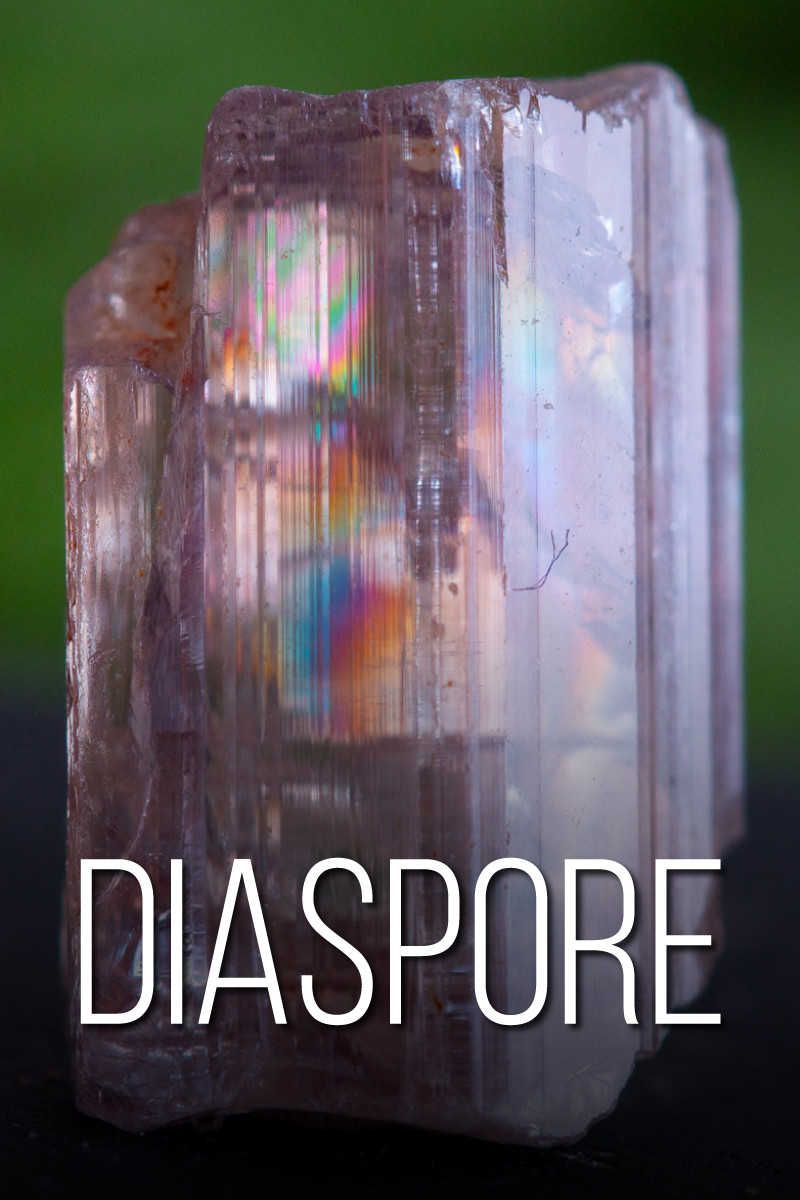 硬铝石是一种透明的氢氧化铝宝石,以其罕见的变色土耳其品种而闻名。硬铝石是什么颜色的?大多数单色宝石是无色、粉色、棕色或黄色。
硬铝石是一种透明的氢氧化铝宝石,以其罕见的变色土耳其品种而闻名。硬铝石是什么颜色的?大多数单色宝石是无色、粉色、棕色或黄色。
一水硬铝石矿物储量丰富,但宝石级一水硬铝石却十分稀少。大多数变色宝石都含有土耳其一水硬铝石,但土耳其一水硬铝石究竟是什么呢?
土耳其硬水铝石是市场上品质最高的硬水铝石宝石材料。土耳其硬水铝石的商品名——Zultanite®、Ottomanite 和 Csarite®——仅限于产自伊尔比尔山脉西南部的材料。
好奇吗?我们会详细告诉你水铝石的属性、品种、疗效等等!

什么是水铝石?
硬水铝石是一种相当现代的半宝石。古人早已知晓它的存在,但宝石级硬水铝石却是在20世纪才被发现。这种宝石的其他名称包括闪长石、凯瑟石和坦塔塔石。
这颗水晶是狮子座、天秤座和双鱼座的星座石。这三个星座都善于活在当下,不把自己看得太重,这与水绿宝石象征的自信和创造力相得益彰。
会变色的苏坦石® (Zultanite®) 比六月诞生石亚历山大变石 (Alexanderite) 的价格略高。虽然两种宝石都价格不菲,但苏坦石® 的价格仅为亚历山大变石的 5% 到 20%。

硬水铝石规格和特性
一水硬铝石是一种氧化铝氢氧化物。其分子式为AlO(OH),但可能含有锰、铁或铬。一水硬铝石的莫氏硬度与坦桑石相似,为6.5-7。
除了土耳其产的宝石,水铝石宝石看起来是什么样子的?大多数水铝石变色宝石在阳光下呈绿色,在荧光灯下呈黄绿色,在白炽灯下呈红粉色。有些在合适的光线下会同时呈现多种颜色。
以下是其他硬水铝石的矿物特征:
颜色:无色、白色、黄色、粉红色、红色、淡紫色、棕色、蓝绿色、绿色、粉棕色、灰色、绿灰色;变色品种有绿色、粉红色和黄色色调。
晶体结构:正交
光泽:玻璃光泽或金刚石光泽;解理处呈珍珠光泽
透明度:半透明至透明
折射率:1.68-1.75
密度:3.1-3.5
解理:[010] 上单向解理完美;[110] 上解理良好
断口:贝壳状
条痕:白色
发光:有时荧光;在短波至紫外线下呈暗淡黄色或绿色
光学效应:某些品种会变色;很少具有猫眼效应
多色性:存在于一些品种中;浅绿色、紫蓝色、玫瑰红色或深红色较强;可以是洋红色、红棕色、绿色和灰绿色。
现在,让我们来分析一下不同的水硬石品种。
硬水铝石的种类
有几种品种不会变色:
铬水铝石:含铬的浅紫色至深紫色品种
锰水铝石:南非玫瑰红至深红色的锰矿品种
现在让我们来讨论一下土耳其的变色品种。
变色水铝石
土耳其变色水铝石在不同光线下呈现出奇异果绿、浓郁的粉红和香槟色。土耳其水铝石稀有吗?是的。土耳其出产大型原石,但宝石级水铝石仍然罕见。
土耳其硬水铝石的另一个昵称是Turkizite。其同名公司的专属商标名称是Zultanite®和Csarite®。那么, Zultanite®和硬水铝石之间有什么区别呢?所有Zultanite®都是硬水铝石,但并非所有硬水铝石都是Zultanite®。只有土耳其产的硬水铝石才可以合法地被称为Zultanite®或Csarite®。
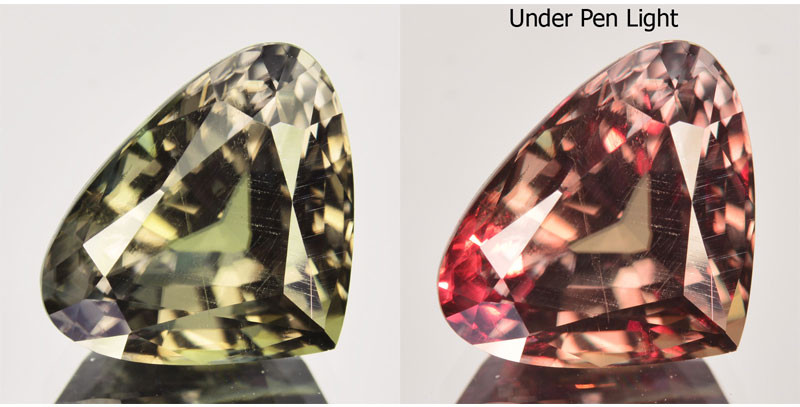
水铝石如何改变颜色?
硬水铝石的颜色变化是通过晶格中的光吸收发生的。
可见光谱包含彩虹的颜色,每种颜色都占据一个波长。通常,宝石的颜色取决于它唯一不吸收的波长——例如,蓝色宝石会吸收除蓝色波长以外的所有波长。
然而,不同的光源发射不同的波长。如果某种波长的光含量较低,那么不吸收该波长(即该颜色)的物体在该光照下看起来会有所不同。
“透射窗口”是指宝石对某种波长(颜色)的吸收率较低。变色宝石有多个透射窗口。因此,如果一个光源发出更多绿色波长,宝石就会呈现绿色;如果另一个光源发出更多红色波长,宝石就会呈现红色。
让我们暂时放下色彩科学,来看看水培植物的精神层面吧!
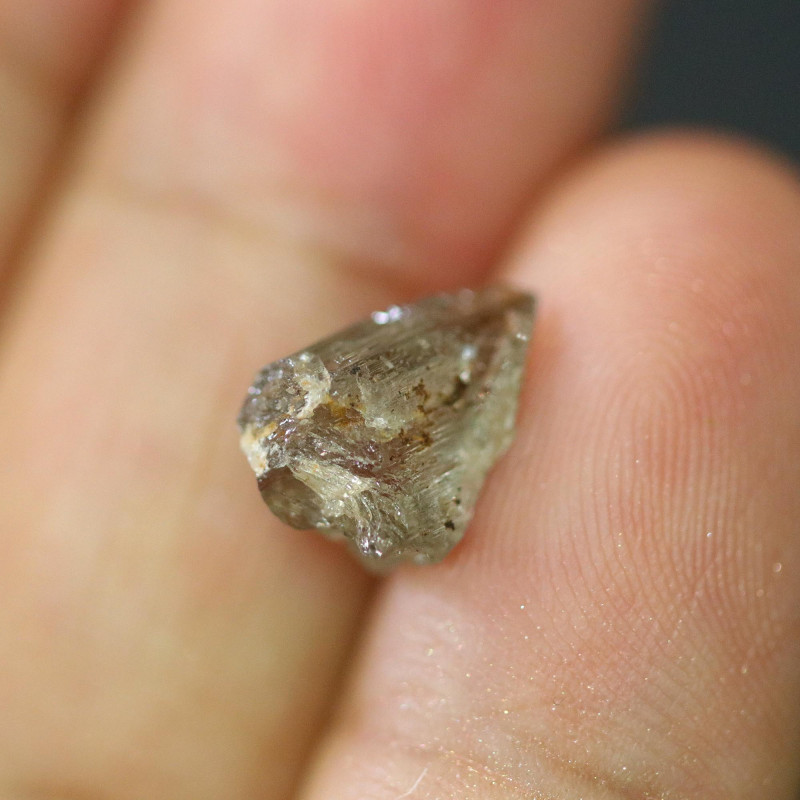
硬水铝石的含义和历史
硬水铝石的意义很大程度上源于其变色的力量。这种石头象征着蜕变,以及对生命潮起潮落的适应。
在土耳其传说中,古代东方哲学家曾记载过有关水晶的记载,而苏丹则佩戴水铝石戒指或将其赠送给他们的妻子。
第一次正式发现一水硬铝石是在 1801 年的俄罗斯乌拉尔地区,当地人称之为“腺状蓝晶石”。
法国矿物学家勒内·贾斯特·阿伊(René Just Haüy)撰写了第一份正式描述,并选择了“水硬铝石”(diaspore)这个名称。它源于希腊语“diaspeirein”,意为“分散”,反映了热量如何使水硬铝石发生爆裂(崩解时发出噼啪声)。
直到 20 世纪 70 年代,土耳其铝土矿矿工发现了一块大型变色样本,颜色从粉红棕色过渡到蓝绿色,宝石级的水铝石才出现。
虽然其他矿场也相继出现,但大部分令人着迷的硬水铝石历史都围绕着土耳其硬水铝石和两位商业伙伴展开:美国宝石切割大师斯蒂芬·科特洛夫斯基 (Stephen Kotlowski) 和土耳其珠宝商穆拉特·阿克贡 (Murat Akgun)。
苏坦石和卡萨石的故事
Akgun 和 Kotlowski 是硬铝石营销的先驱,他们于 20 世纪 90 年代中期创立了 Golden Land Trading 公司。1995 年,Kotlowski 因刻画一颗 26 克拉扇形硬铝石而荣获 AGTA Spectrum “尖端科技奖”。
到 2005 年,Akgun 获得了合法采矿权和资金支持,将公司扩展为 Zultanite Gems LLC。
Akgun建议采用一个能向奥斯曼帝国苏丹致敬的商品名,以突出其高品质宝石的特色,并促进市场营销。他们反复商议,从“Ottominite”(奥斯曼帝国苏丹)到“Sultanite”(苏丹石),最终又定为“Zultanite”(祖尔坦石)。
苏坦石的知名度不断提升,到 2007 年,公众获得了商业化的水铝石宝石供应。2011 年左右,科特洛夫斯基将世界上最大的苏坦石®切割成一颗重达 96 克拉的宝石,名为“苏丹之盾”。
2012年,英国珠宝商斯蒂芬·韦伯斯特(Stephen Webster)将苏丹之盾镶嵌在一套奢华珠宝中。这套珠宝最终以150万美元的价格售出,其中三分之二的成交价来自苏丹之盾。
不幸的是,接下来的一段法律纠纷缠身——最终Akgun失去了公司所有权、“Zultanite”名称以及所有水铝石库存。Akgun不得不从头开始,创建了一个新的商标名:Csarite。最终,双方解决了分歧,并保持了友好关系。
说到宽恕和治愈,Zultanite® 作为治疗石有什么好处?
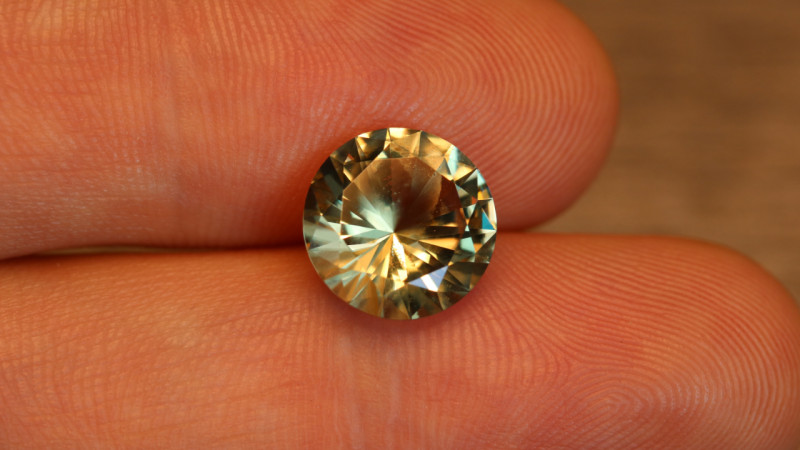
硬水铝石的治疗功效
与所有晶体一样,水铝石的能量和颜色赋予它作为疗愈石的特殊能力。水铝石的许多形而上学用途都具有变革性,无论是改变你的视角,还是应对突如其来的生活变故。
与所有粉红色宝石一样,粉红色水铝石可以鼓励自爱、治愈情感创伤并提供滋养的保证。
硬水石对于身体、情感和脉轮治疗有哪些形而上学特性?
身体康复
硬水石对身体的益处可能包括改善记忆力和支持神经系统。它还可以通过降低血压和心率来减轻压力。
与许多无色宝石一样,水铝石可以带来注意力和头脑清晰,特别是当您因衰老或压力而出现脑雾时。
情绪疗愈
蓝宝石能帮助你调整情绪,适应新的开始和转变。它的颜色变化体现了它所谓的将悲观观点转化为乐观态度的能力。
此外,水铝石还能增强韧性和解决问题的能力。水晶治疗师利用水铝石来激发创造力,并增强梦境回忆。
脉轮疗愈
脉轮石是用于能量疗愈的工具,用于平衡脉轮——与健康各个方面相关的能量中心。水辉石是用于第三眼脉轮的脉轮石。
第三眼脉轮位于额头两眼之间,代表着更高的精神觉知。当它被阻塞时,你可能会怀疑自己的直觉,或对生活感到不满。
当水铝石打开脉轮时,您会对自己的目标充满信心,相信自己的直觉,并体验到更深刻的自我发现。

硬水铝石宝石特性
宝石的特性是专家评估宝石客观价值的因素。颜色、切工、净度和克拉重量都会影响水铝石的价值。
颜色
大多数硬水铝石的颜色来自于石头形成过程中的杂质。铬会产生绿色,锰会产生粉色和红色,而铁会产生绿色或棕色。
品质最佳的变色水铝石颜色鲜明饱和,对比度也很好,在阳光下呈现明亮的淡黄色,在烛光下则呈现深覆盆子红色。品质较差的样本则会呈现柔和的色调,例如卡其绿、稻草黄、灰色和棕色。
切
硬水铝石完美的解理和晶体结构使其刻面颇具挑战性,因此,打造精美刻面所需的专业技能会提升其价值。此外,切工质量也会影响宝石的颜色和颜色变化效果。
常见的硬水铝石刻面形状包括垫形、矩形和八角形。罕见的猫眼状硬水铝石(具有“猫眼”效果)通常会被切割成凸圆形宝石。

明晰
净度等级描述宝石中内含物的存在。在彩色宝石净度等级中,一水铝石属于II型,这意味着其内含物细小,只有在10倍放大镜下才能看到。
含有大量可见内含物的宝石价值会显著降低。唯一例外是那些能产生猫眼效应的纤维状内含物,因为猫眼效应的水铝石非常罕见。
克拉重量
较大的水铝石宝石通常每克拉价格更高。只有超过2克拉的宝石才能看到明显的颜色变化。超过5克拉的宝石颜色变化最佳,但这只占水铝石宝石总数的3%左右。
任何重量超过 7 克拉的肉眼无瑕的水硬铝石(肉眼无内含物)都属于前 1%。
合成材料
合成变色水铝石通常是一种人造玻璃,在荧光灯下呈黄绿色,在白炽灯下呈棕黄色。制造商可能会使用钕和镨来引起颜色变化。
如何辨别水铝石是否真实存在?
合成或假冒的硬水铝石价格通常低得令人怀疑。虽然与天然石材几乎难以区分,但一些热液合成硬水铝石的标签上会印有“克/吨”的字样。一种常见的冒充Zultanite®的假货在eBay上越来越受欢迎,它看起来呈灰白色,羽毛状,带有金属光泽。
唯一能证明水铝石是天然的,那就是宝石认证。
天然水孢子是如何形成的?
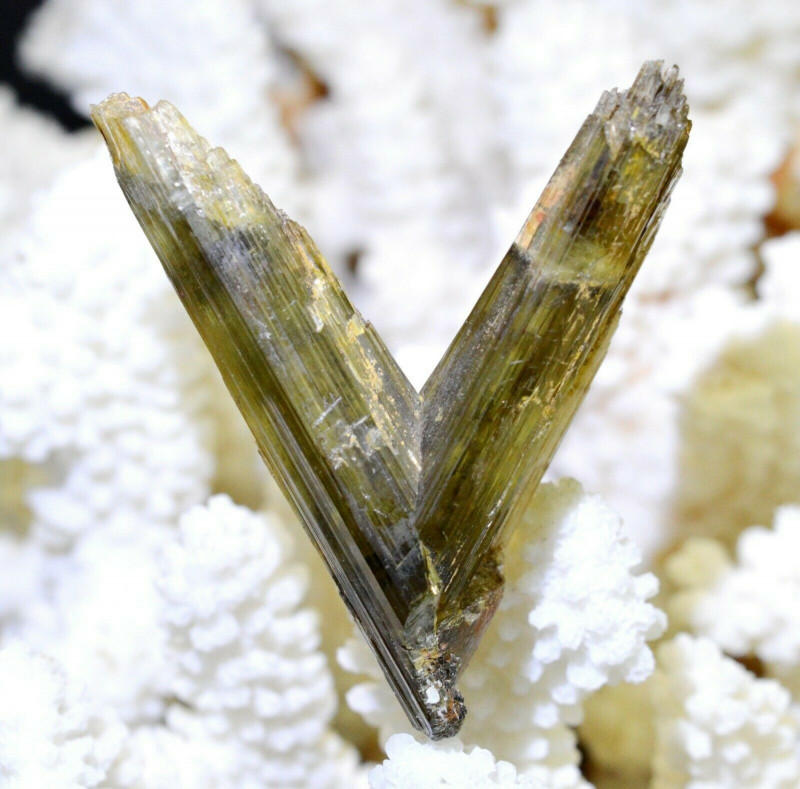
硬水铝石的形成与来源
一水硬铝石最常见的形成方式是成岩作用。
成岩作用始于热带环境风化铝硅酸盐岩石,将硅酸盐转化为粘土。粘土与水发生反应,最终形成铝土矿。大多数一水硬铝石都来自铝土矿床。
另一种形成方式是热液蚀变。铝质岩起源于地热系统,热量自然地从地壳传递到地表。热流体渗入透水岩石,改变岩石结构,并形成新的矿物,例如硬水铝石。
采矿地点
众所周知,土耳其是硬水铝石宝石的主要产地。阿富汗于2020年出现,出产多色性硬水铝石,色泽从淡粉色到淡紫色不等。
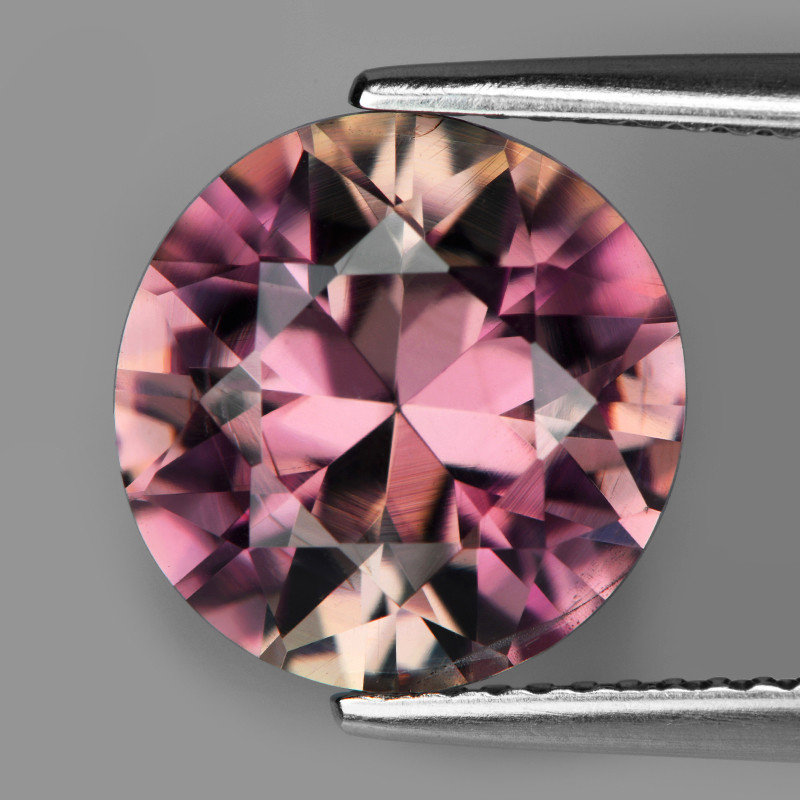 图片:来自阿富汗的粉红色硬铝石
图片:来自阿富汗的粉红色硬铝石
除了阿富汗和土耳其,还有哪些地方发现了硬水铝石?我们列出如下:
阿根廷
巴西
中国
法国
德国
希腊
格陵兰
匈牙利
日本
新西兰
挪威
俄罗斯
南非
瑞士
瑞典
英国(英格兰和苏格兰)
美国(宾夕法尼亚州、亚利桑那州、马萨诸塞州)
是时候聊聊价格了。水铝石贵吗?像苏坦石®或卡萨莱特®这样的高品质宝石价格不菲,但让我们来具体分析一下。

硬水铝石的价格和价值
刻面水铝石的批发价为每克拉70至900美元(变色宝石)。未变色的水铝石宝石通常每克拉6至40美元,而粉紫色的阿富汗水铝石每克拉售价则为150至300美元。
Zultanite® 每克拉多少钱?Zultanite® 的克拉价格根据克拉重量而变化,但零售价总体在每克拉 500 美元至 10,000 美元之间,批发价在每克拉 50 美元至 3,000 美元之间。
Csarite® 值多少钱?5 克拉以下的Csarite®宝石价格为每克拉 30 至 200 美元。5 克拉以上的 Csarite® 宝石价格为每克拉 500 至 1,000 美元。
最实惠的选择是水铝石凸圆形宝石和原石标本。变色凸圆形宝石的批发价为每克拉 2.50 至 11 美元。水铝石原石标本的价格通常为每克拉 3 美元,但也可能在每克拉 2 至 20 美元之间。
硬水铝石的保养和维护
适当的宝石保养对于防止损坏至关重要。最安全的珠宝选择是吊坠和耳环,但您仍然可以购买水铝石戒指——我们只是建议采用保护性镶嵌。
用温水和温和的肥皂轻轻清洗水铝石。用温水冲洗,然后用超细纤维布小心地拍干。
保持水硬铝石远离:
极端温度变化
高温
超声波和蒸汽清洁器
酸
粗暴处理
进行剧烈运动前,请取下您的水铝石首饰。请将其与其他宝石分开存放。
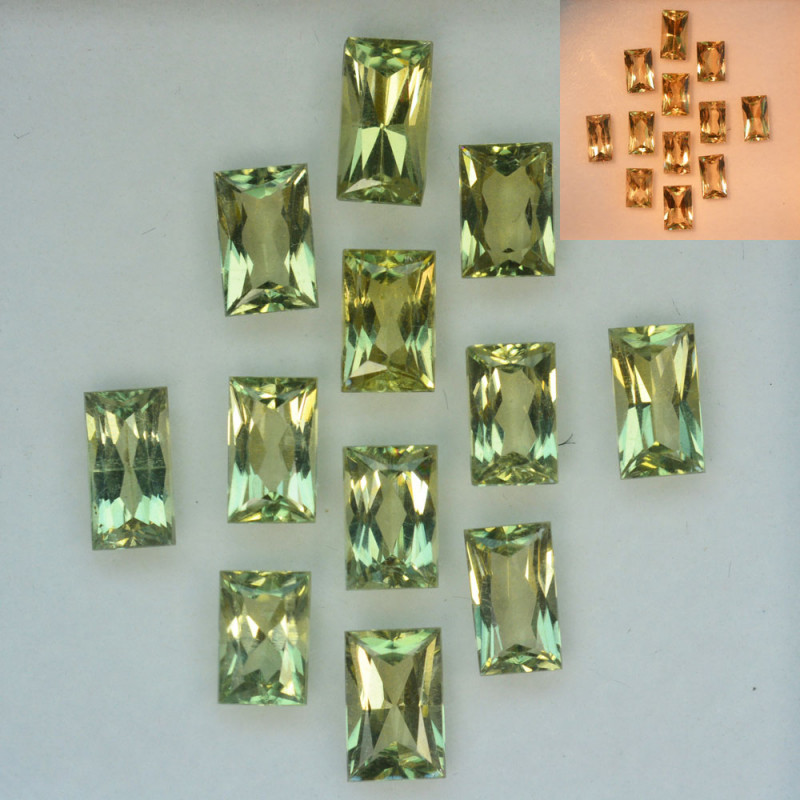
准备好与 Diaspore 一起翱翔吗?
蓝宝石华丽的变色效果和丰富的现代历史使其成为适合任何品味的卓越享受。
虽然价格略贵,但其独特性意味着水铝石可以成为一项不错的投资。无论您选择Zultanite®、Csarite®,还是不变色的水铝石,其焕然一新的魅力都定会让您眼前一亮!
搜索Gemstone Encyclopedia
最新的文章
彩虹格纹日光石是一种长石,由于内部含有各种包裹体,呈现出三种绚丽的光学效应。它绚丽多彩的光泽和格纹图案使其成为收藏家梦寐以求的珍宝!
12th Jan 2026
文章分类
How To's is where you will find helpful articles from gem Rock Auctions on how to cut gemstones, select gemstones and buy gemstones.
9文章数

